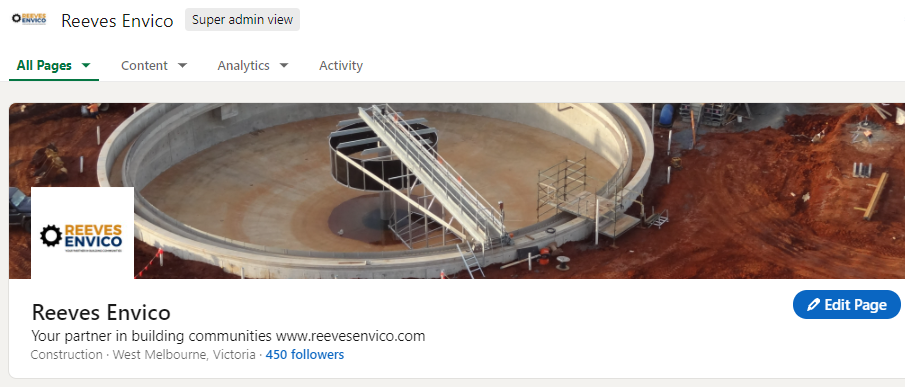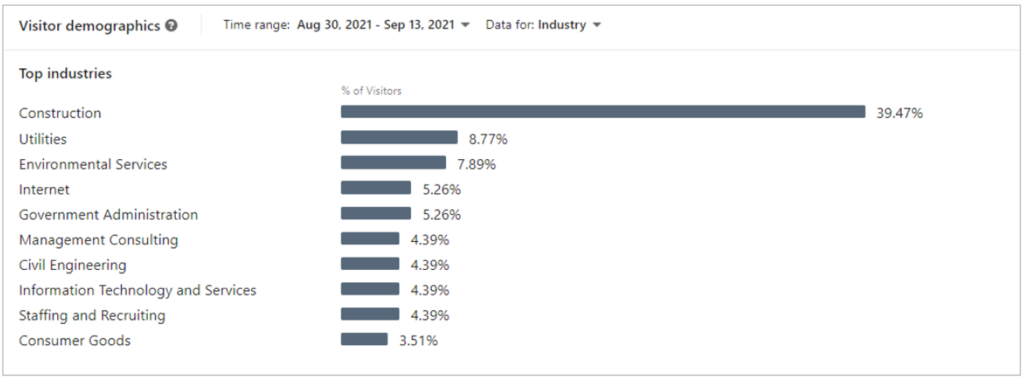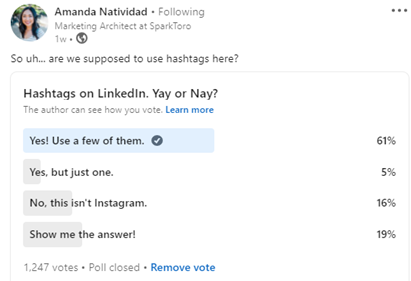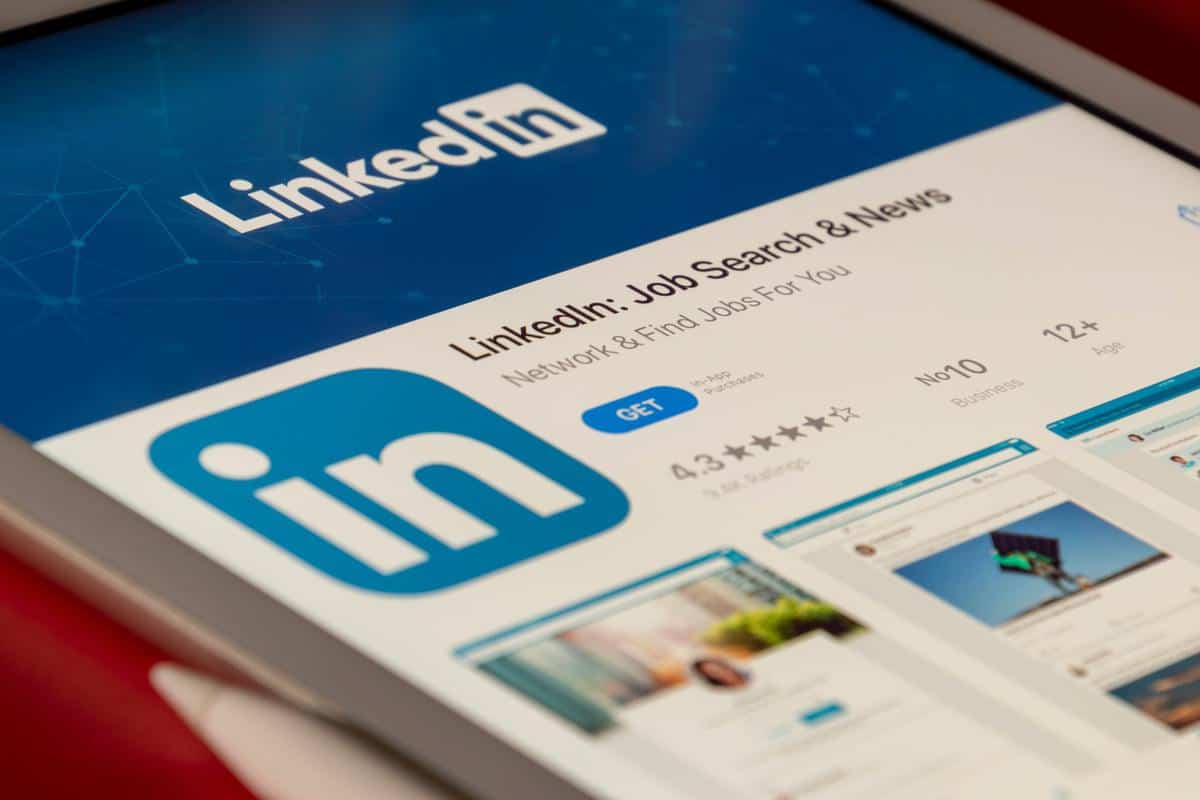Did you know that you can leverage LinkedIn to promote your products or services, get more leads, and build your brand – all through free content?
Many think that LinkedIn is just a “job site”. Some create a LinkedIn account to have an online resume, only to update it when they change jobs. Others use LinkedIn for hiring or finding jobs. While these still hold, LinkedIn has evolved from a mere online CV into a powerful content marketing platform.
The power of LinkedIn compared to other social media sites
LinkedIn reminds me of old school Facebook when I’m likely to see my friends’ updates on the newsfeed. As a marketer, this is what I love most about LinkedIn – its killer organic reach.
LinkedIn tends to show posts from anyone on the platform – individuals and company pages alike. When someone engages with another person’s post, they also appear on the newsfeed.
In today’s Facebook, I barely see company pages’ updates. Unless it’s a sponsored post (a Facebook ad), company or brand pages rarely – if ever – land on the newsfeed.
When I talk to companies, I highly recommend a stronger focus on LinkedIn. Your post for free, and you can still get as many eyeballs as you can get from sponsored posts on other platforms.
How it started / how it’s going
Two years ago, I created a LinkedIn company page for Reeves Envico, a Melbourne-based construction company with projects all over Australia and the Pacific Islands. What started as just a LinkedIn profile that employees and clients can follow has turned into a content marketing machine for the company.

Fast forward to now, the page has 450 followers (and counting). I’m not going to claim that this number is something to aspire for in two years. I haven’t seen a benchmark for how many followers a page must have within a certain period (if you have, please let me know).
What I do know is that the page has incredible engagement. Click-through and engagement rates for most of the posts are above the LinkedIn average (4.13% and 2.98%, respectively, according to socialstatus.io).
After looking for trends and analyzing data, here are five things I’ve learned from building a LinkedIn company page from scratch:
Lesson #1: A clear and strong profile boosts your branding and discoverability
Start by optimizing the page and filling in all the fields. LinkedIn makes this pretty easy for its users as it prompts them to fill in fields one after the other.
- Upload photos (both profile and banner) that reflect your business’ branding.
- Take advantage of the Overview section to describe what your business does clearly and the products/services you offer. Add relevant keywords into your company’s description to boost your page’s Search Engine Optimization (SEO) or discoverability.
- Put your website’s URL and create the custom button to prompt visitors to take action i.e., sign up for a newsletter, visit your website, register for an event, etc.
Lesson #2: Consistent and regular updates increase engagement, traffic and follower counts
This is a big one.
As I went through the analytics over the last year or so, I noticed a common trend. I saw a spike in traffic, engagement, and new follower count for months when consistent and frequent updates were made. This may speak volumes about LinkedIn’s algorithm, but it also makes total sense:
- When you have a constant stream of content for your followers, you’re likely to drive more people into your page.
- When followers see posts they’re interested in, they’re likely to interact and leave comments.
- When your contacts engage with your posts, their network (not necessarily a follower yet) sees your post.
- And the more frequently the LinkedIn-verse finds you on their newsfeeds and deem your posts relevant, the more likely they will follow your page.
Here’s a caveat: I’m not just talking about frequency; I’m also stressing the importance of quality.
It’s important to serve your LinkedIn network with highly relevant content. In the case of Reeves Envico, topics range from project updates; new business wins, tender opportunities, and engagement within the local project communities. These things resonate with fellow construction companies, suppliers and subcontractors looking for new businesses and clients who put a premium on providing local jobs and businesses, respectively.
If you’re thinking, “well, we just don’t have that much content”, I’ll ask you to reconsider.
Not all our posts are written from scratch. Most of them are repurposed. Some are re-shares from clients and partners. Others are blog articles from the website. Occasionally there will be press pick-ups or features from online magazines. These are all shared on the LinkedIn page.
The important thing is whatever you publish, it’s something your readers will be interested to see. Here are some best practices for creating content that your audience will read.
This brings me to my next point.
Lesson #3: Post content from your readers’ shoes
A good rule of thumb: know who your followers are and ask – what’s in it for them?
Have a look at your existing followers and the people you want to follow your page. Which industry are they from?
In Reeves Envico’s case, the majority of the visitors are from the construction industry and lateral sectors where most of our partners and clients are from. This data informs the content strategy and helps in brainstorming for topics.

Don’t forget to check your analytics. Take stock of the posts that have resulted in the most engagement and traffic. See what your competitors are posting and which of them are the most engaged. These data-driven insights inform the content strategy and help you identify topics your readers resonate with.
Publishing content on LinkedIn goes beyond company updates. It’s more than employees’ group photos or selfies. LinkedIn also presents an opportunity for thought leadership, industry updates, and other important matters for your followers.
#4 With great content comes knowing when to post
There’s a thing called LinkedIn’s Golden Hour, which taps into the algorithm and boosts engagement.
In this article Richard Bliss refers to it as:
“The time period right after posting on LinkedIn, when the algorithm for a high engagement rate is prime.”
LinkedIn’s Golden Hour only means one thing: when you get engagement in the first hour of publishing, the higher your engagement rate is likely to be.
There are two important elements to this:
- Knowing when your audience is most active on LinkedIn
LinkedIn analytics does not provide data when your followers are online, but Hootsuite says the best time to post on LinkedIn is 9:00 AM on Tuesdays and Wednesdays.
Despite these recommendations, I still like to get the pulse for when my audience is most active. I experiment with times.
For instance, I know that my followers are mostly professionals with 9-5 office jobs. So I post on weekdays, either before work starts in the morning, during lunchtime, or after work. On rare times I post on weekends, but again this is more for the sake of experimenting and finding out what works best for the page.
- Getting the engagement
To tap into the Golden Hour, it is important to get interactions within the first hour of posting. This can be done through tagging partners, employees involved in the project/subject of the post, and even encouraging interactions with tactics like what is called the engagement bait:

Here’s another algorithm power tip: upload more videos natively instead of embedding links from other platforms like YouTube. Videos uploaded directly into the platform get better reach and engagement than external ones.
Make your videos easy to consume. Short and snappy does the job. Captions help engage people on the go (or those who can’t play the audio), so use tools like Rev to add text into your videos.
#5 Hashtags work
It’s easy to think that hashtags are passé. But remember what I said about how LinkedIn reminds me of the glory days of social media? Hashtags still pretty much work on the platform.
Based on Amanda Natividad’s LinkedIn poll, the majority still use a few of them.

If you want to cast a wider net and boost your discoverability, putting the # sign next to relevant keywords help.
Try using industry hashtags, trends, campaigns, and specific topics like #contentmarketing #linkedinmarketing #business #construction #IWD2021.
LinkedIn provides suggested hashtags based on keywords from your posts. You can also make a curated list of trending ones or use LinkedIn’s search box to know how many people are following a specific hashtag.
Some people use branded hashtags so other LinkedIn users can easily find their content. For instance, I can use #growthmarketingbytina to brand my content. The LinkedIn-verse can search this hashtag if they want to find my updates.
Just don’t go overboard. While there isn’t a prescribed number of hashtags per post, 3-5 seems to be the range many on LinkedIn suggest.
Conclusion
LinkedIn is more than just an online resume. It is the perfect tool to promote your company, brand, products, and services. By knowing how the algorithm works and posting relevant content consistently through time, you’re sure to grow your company page and use this content marketing machine to your advantage.
If you would like to know more about growing a company page on LinkedIn, please reach out and connect with me on LinkedIn.
Read more: Growth Marketing Mindset: The user-centric approach
Read more: Three big reasons you need to diversify your marketing strategy
Keep up to date with our stories on LinkedIn, Twitter, Facebook and Instagram


